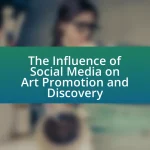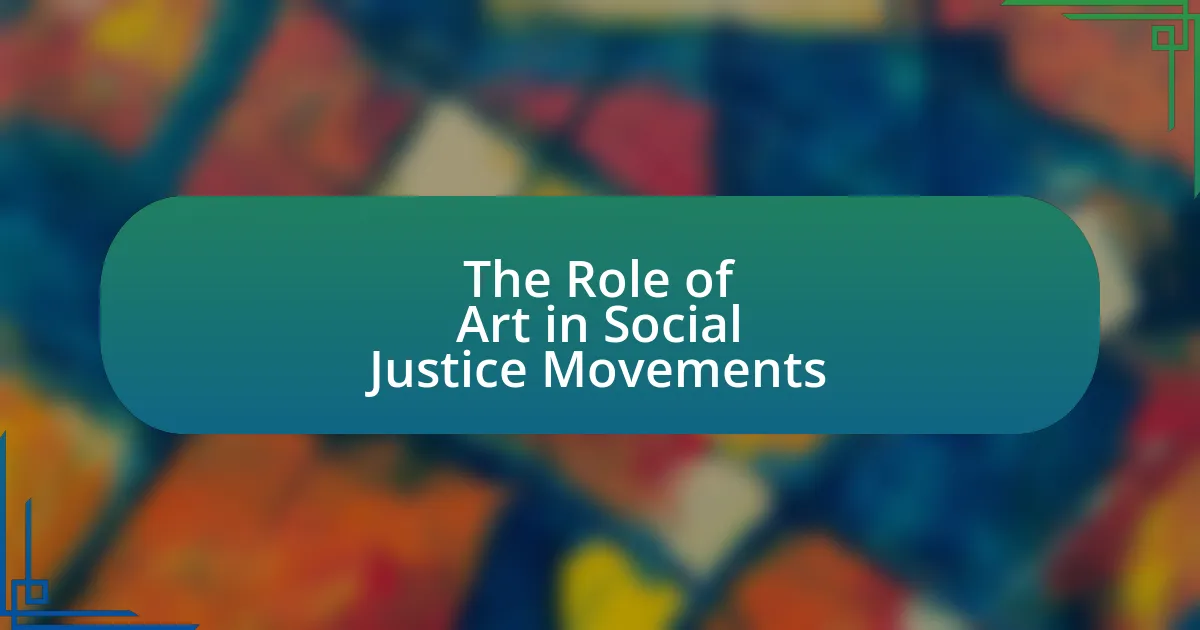The article examines the revival of classical techniques in modern art, highlighting the resurgence of traditional artistic methods such as realism, chiaroscuro, and classical composition. It discusses how contemporary artists integrate these techniques into their work, influenced by a growing appreciation for craftsmanship and authenticity. The article also explores specific classical methods being revived, the cultural factors driving this trend, and the impact on the art community, including audience reception and educational roles. Additionally, it addresses the challenges and opportunities artists face in incorporating classical techniques into their modern practices.
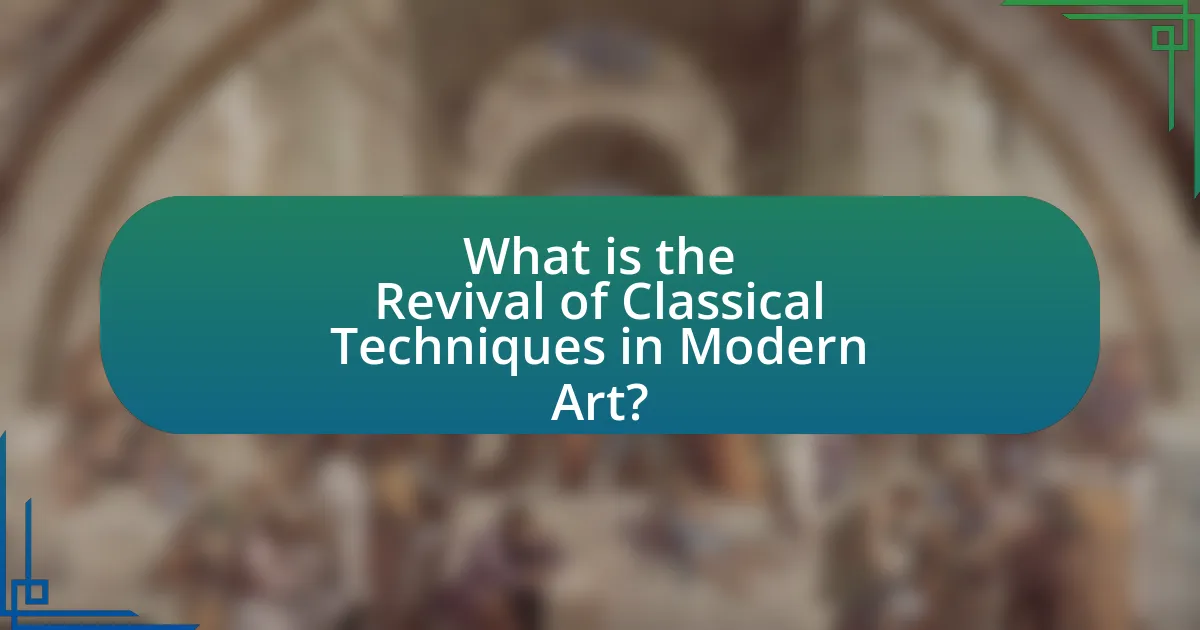
What is the Revival of Classical Techniques in Modern Art?
The Revival of Classical Techniques in Modern Art refers to the contemporary resurgence of traditional artistic methods and styles that were prominent in historical art movements. This revival is characterized by artists incorporating techniques such as realism, chiaroscuro, and classical composition into their work, often as a response to the abstraction and conceptual art that dominated the 20th century. Notable examples include the works of artists like Odd Nerdrum and the New Classical movement, which emphasize craftsmanship and the human figure, echoing the techniques of the Old Masters. This trend highlights a growing appreciation for the technical skills and aesthetic values of classical art, demonstrating that these methods remain relevant in today’s artistic landscape.
How do classical techniques influence contemporary artistic practices?
Classical techniques significantly influence contemporary artistic practices by providing foundational skills and methodologies that artists utilize to enhance their work. For instance, the use of traditional drawing methods, such as chiaroscuro and perspective, informs modern artists in creating depth and realism in their pieces. Additionally, many contemporary artists, like Kehinde Wiley, incorporate classical painting techniques to reinterpret historical themes and challenge societal narratives, demonstrating the ongoing relevance of these methods. This blending of classical and modern approaches not only enriches the visual language of contemporary art but also fosters a dialogue between past and present artistic expressions.
What specific classical techniques are being revived in modern art?
Specific classical techniques being revived in modern art include chiaroscuro, sfumato, and the use of traditional fresco methods. Chiaroscuro, which involves the use of strong contrasts between light and dark to create volume, has been adopted by contemporary artists to enhance depth in their works. Sfumato, a technique that allows for soft transitions between colors and tones, is being utilized to create atmospheric effects in modern paintings. Additionally, traditional fresco techniques, which involve applying water-based pigments on freshly laid wet plaster, are being re-explored by artists seeking to connect with historical practices and materials. These revivals reflect a growing interest in blending classical methods with contemporary themes and aesthetics.
How do artists integrate these techniques into their work?
Artists integrate classical techniques into their work by employing methods such as chiaroscuro, perspective, and traditional painting techniques to enhance depth and realism. For instance, contemporary painters like Kehinde Wiley utilize chiaroscuro to create dramatic contrasts in light and shadow, reminiscent of the Old Masters. Additionally, artists often study historical works to understand the application of perspective, which they then adapt to modern themes, as seen in the works of artists like Julie Mehretu, who combines traditional spatial techniques with abstract forms. This integration not only pays homage to classical art but also allows for innovative expressions that resonate with contemporary audiences.
Why is there a resurgence of interest in classical techniques?
There is a resurgence of interest in classical techniques due to a growing appreciation for traditional craftsmanship and the desire for authenticity in art. This revival is evident as contemporary artists increasingly incorporate classical methods, such as oil painting and drawing, into their work, seeking to connect with historical practices and enhance their artistic expression. The rise of social media platforms has also facilitated this trend, allowing artists to showcase their mastery of classical techniques to a wider audience, thereby inspiring others to explore these methods. Additionally, art institutions and educational programs are increasingly emphasizing classical training, reinforcing the value of these techniques in modern artistic practice.
What cultural or societal factors contribute to this revival?
The revival of classical techniques in modern art is primarily driven by a growing appreciation for traditional craftsmanship and a reaction against contemporary digital art forms. This resurgence is influenced by societal trends that value authenticity and tactile experiences in an increasingly digital world. For instance, art movements such as the New Classical Movement emphasize the importance of skill and technique, reflecting a cultural shift towards valuing historical methods and the emotional depth they convey. Additionally, educational institutions are increasingly incorporating classical training into their curricula, fostering a new generation of artists who are equipped with these traditional skills. This combination of cultural appreciation and educational emphasis supports the revival of classical techniques in modern artistic practices.
How does the revival of classical techniques reflect current artistic trends?
The revival of classical techniques reflects current artistic trends by emphasizing craftsmanship, authenticity, and a return to traditional values in art. Contemporary artists are increasingly incorporating classical methods, such as oil painting and chiaroscuro, to create works that resonate with historical significance while addressing modern themes. This trend is evident in exhibitions and movements that celebrate the technical mastery of past artists, showcasing how these techniques can enhance contemporary narratives. For instance, the resurgence of interest in realism and figurative art in the 21st century highlights a collective desire for depth and skill in an era dominated by digital and abstract forms.
What impact does the revival have on the art community?
The revival of classical techniques in modern art significantly enriches the art community by fostering a deeper appreciation for traditional craftsmanship and enhancing artistic diversity. This resurgence encourages contemporary artists to integrate historical methods into their work, leading to innovative expressions that blend old and new styles. For instance, the incorporation of techniques such as chiaroscuro and sfumato, which were prominent in the Renaissance, allows artists to explore complex visual narratives and emotional depth. Additionally, exhibitions showcasing these revived techniques attract wider audiences, thereby increasing engagement and dialogue within the art community. This trend is supported by the growing number of workshops and educational programs dedicated to classical methods, which further solidifies the revival’s impact on nurturing talent and preserving artistic heritage.
How do critics and audiences respond to works that utilize classical techniques?
Critics and audiences generally respond positively to works that utilize classical techniques, appreciating their craftsmanship and depth. This positive reception is often rooted in the familiarity and historical significance of classical methods, which evoke a sense of tradition and mastery. For instance, exhibitions featuring artists who blend classical techniques with contemporary themes, such as Kehinde Wiley, have garnered critical acclaim and audience admiration, highlighting the effectiveness of these techniques in engaging modern viewers. Additionally, studies indicate that audiences often find classical techniques more relatable, as they resonate with established artistic standards and cultural narratives, thereby enhancing the overall appreciation of the artwork.
What role do educational institutions play in this revival?
Educational institutions play a crucial role in the revival of classical techniques in modern art by providing structured environments for learning and practice. They offer specialized programs that focus on traditional methods, such as drawing, painting, and sculpture, which are essential for mastering classical techniques. For instance, many art schools incorporate curricula that emphasize the study of historical art movements and the techniques used by classical artists, thereby fostering a deeper understanding and appreciation among students. This educational framework not only preserves these techniques but also encourages innovation as students blend classical skills with contemporary practices.
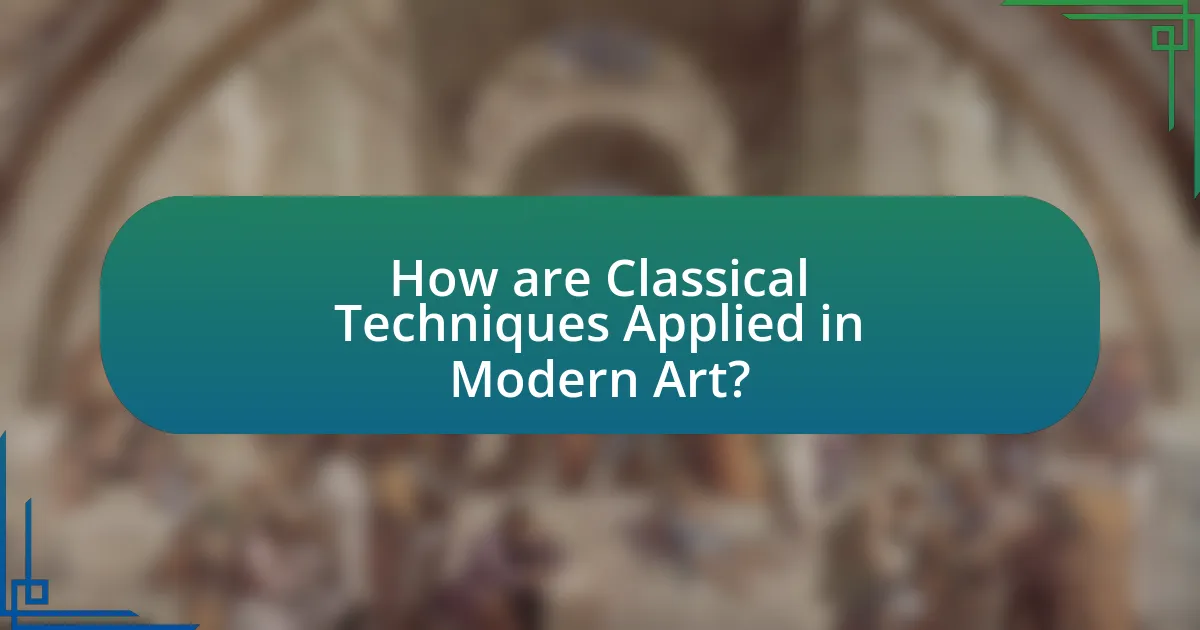
How are Classical Techniques Applied in Modern Art?
Classical techniques are applied in modern art through the use of traditional methods such as chiaroscuro, perspective, and the study of anatomy. Artists like Kehinde Wiley and Jenny Saville incorporate these techniques to create contemporary works that resonate with historical art forms. For instance, Wiley’s portraits utilize classical composition and lighting to evoke the grandeur of Renaissance painting while addressing modern themes of identity and representation. This blending of classical methods with modern subject matter demonstrates a revival of these techniques, allowing artists to connect past and present in their work.
What are the most common classical techniques used today?
The most common classical techniques used today in modern art include oil painting, watercolor, and drawing. Oil painting remains popular due to its versatility and rich color depth, with artists like Chuck Close and Gerhard Richter employing it in contemporary works. Watercolor is favored for its fluidity and transparency, often seen in the works of artists such as Andrew Wyeth. Drawing, particularly in pencil and charcoal, is foundational in art education and continues to be utilized by artists for sketching and detailed studies, as evidenced by the works of contemporary illustrators and fine artists. These techniques are integral to the revival of classical methods, demonstrating their enduring relevance in the art world.
How do techniques like chiaroscuro and sfumato manifest in modern works?
Chiaroscuro and sfumato manifest in modern works through the use of light and shadow to create depth and atmosphere, as well as through soft transitions between colors and tones. Contemporary artists, such as Kehinde Wiley and Jenny Saville, employ chiaroscuro to enhance the three-dimensionality of their subjects, drawing on the dramatic contrasts that define this technique. Similarly, sfumato is evident in the works of artists like Gerhard Richter, who utilize blurred edges and subtle gradations to evoke emotion and complexity. These modern applications reflect a revival of classical techniques, demonstrating their enduring relevance in conveying narrative and mood in art today.
What mediums are favored for these classical techniques in contemporary art?
Contemporary art favors mediums such as oil paint, watercolor, and charcoal for classical techniques. These mediums are preferred due to their historical significance and versatility, allowing artists to explore traditional methods while incorporating modern themes. For instance, oil paint has been used since the Renaissance, providing rich color and texture, while watercolor offers a fluidity that enhances expressive techniques. Charcoal, known for its immediacy and depth, allows for dynamic sketching and detailed rendering, making it a popular choice among contemporary artists revisiting classical styles.
How do artists adapt classical techniques for modern themes?
Artists adapt classical techniques for modern themes by reinterpreting traditional methods to address contemporary issues and aesthetics. For instance, painters may utilize oil painting techniques from the Renaissance while incorporating modern subject matter such as social justice or technology. This blending allows for a dialogue between the past and present, as seen in the works of artists like Kehinde Wiley, who employs classical portraiture styles to depict modern figures, thereby challenging historical narratives. Such adaptations not only preserve the technical mastery of classical art but also make it relevant to today’s cultural conversations.
What themes are commonly explored through the lens of classical techniques?
Common themes explored through the lens of classical techniques include the human condition, nature, and the passage of time. Artists often utilize classical techniques to convey complex emotions and narratives related to these themes, drawing on historical references and traditional methods. For instance, the portrayal of the human figure in classical art emphasizes anatomy and expression, reflecting societal values and individual experiences. Additionally, nature is frequently depicted with meticulous detail, showcasing the beauty and complexity of the natural world, while the theme of time is often represented through symbolism and composition, illustrating the transient nature of life. These themes resonate across various art forms, reinforcing the relevance of classical techniques in contemporary artistic expression.
How do modern artists reinterpret classical subjects?
Modern artists reinterpret classical subjects by infusing contemporary themes, techniques, and perspectives into traditional motifs. For instance, artists like Kehinde Wiley and Amy Sherald reimagine classical portraiture by featuring people of color in poses reminiscent of historical European paintings, thereby challenging the narratives of representation and identity. This approach not only honors classical art forms but also critiques and expands their meanings in today’s context, reflecting societal changes and diverse experiences.
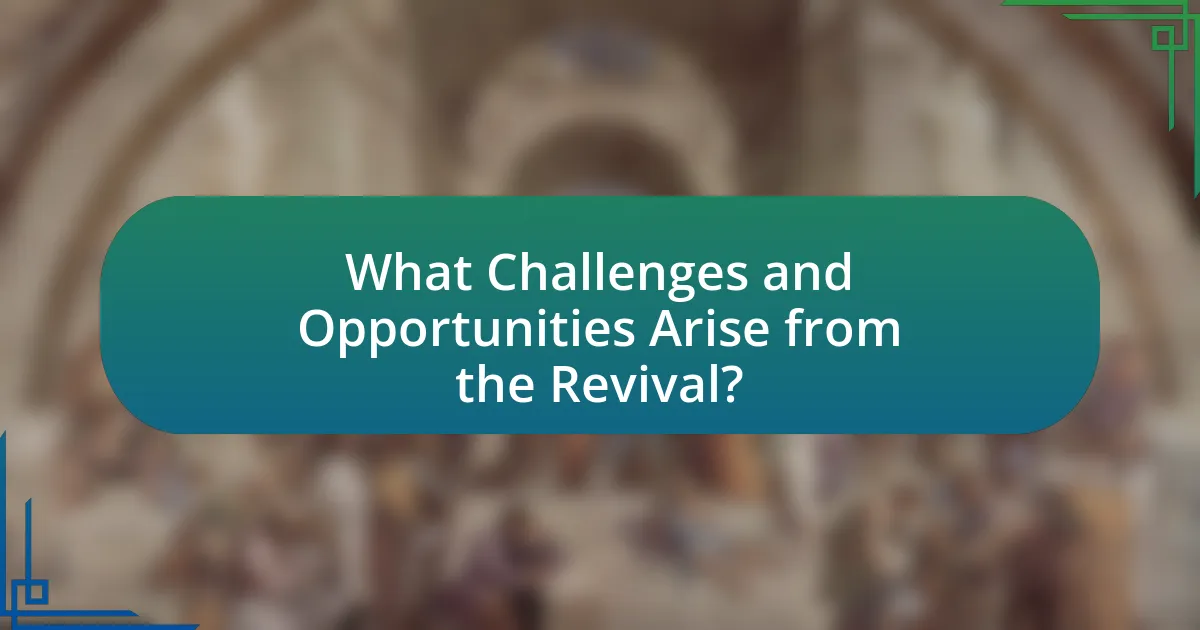
What Challenges and Opportunities Arise from the Revival?
The revival of classical techniques in modern art presents both challenges and opportunities. One significant challenge is the potential resistance from contemporary artists and audiences who may prefer innovative, abstract styles over traditional methods. This resistance can hinder the acceptance and integration of classical techniques into modern artistic practices. Conversely, an opportunity arises from the growing interest in authenticity and craftsmanship, as many artists and collectors seek to reconnect with historical methods, enhancing the value and appreciation of artworks created using these techniques. This trend is supported by a resurgence in art education focusing on classical skills, which can lead to a new generation of artists who blend traditional and modern approaches, ultimately enriching the art landscape.
What challenges do artists face when incorporating classical techniques?
Artists face several challenges when incorporating classical techniques, primarily including the difficulty of mastering intricate skills, the pressure to innovate within traditional frameworks, and the potential disconnect with contemporary audiences. Mastery of classical techniques, such as oil painting or chiaroscuro, requires extensive training and practice, which can be time-consuming and demanding. Additionally, artists often feel the need to balance these traditional methods with modern artistic expressions, leading to creative tension. This tension can result in artworks that may not resonate with audiences accustomed to contemporary styles, creating a barrier to acceptance. Historical context shows that many artists, like Vincent van Gogh and Pablo Picasso, faced similar struggles when integrating classical elements into their work, highlighting the ongoing challenge of bridging the gap between tradition and modernity.
How do traditional techniques compete with modern digital methods?
Traditional techniques compete with modern digital methods by offering unique tactile experiences and authenticity that digital methods often lack. For instance, traditional painting and drawing allow artists to engage physically with materials, creating textures and nuances that digital tools may struggle to replicate. Additionally, many art enthusiasts and collectors value the originality and craftsmanship inherent in traditional works, which can enhance their market appeal. According to a survey by Art Basel and UBS, 70% of collectors prefer original artworks over digital reproductions, highlighting the enduring demand for traditional techniques in the art market.
What misconceptions exist about the revival of classical techniques?
One misconception about the revival of classical techniques in modern art is that it represents a rejection of contemporary styles and innovations. In reality, many artists incorporate classical techniques to enhance their modern expressions rather than to dismiss contemporary art forms. For instance, artists like Kehinde Wiley and Julie Mehretu blend traditional methods with modern themes, demonstrating that classical techniques can coexist with and enrich contemporary art. This integration highlights a dialogue between past and present rather than a strict adherence to historical practices.
What opportunities does this revival create for artists?
The revival of classical techniques in modern art creates opportunities for artists to enhance their skill sets and broaden their creative expressions. By integrating traditional methods, artists can attract a diverse audience that appreciates both contemporary and historical art forms. This revival also allows artists to differentiate themselves in a saturated market, as unique blends of classical and modern styles can lead to innovative works that stand out. Furthermore, the resurgence of interest in classical techniques can lead to increased funding and support for art programs, workshops, and exhibitions, providing artists with more platforms to showcase their work and connect with patrons.
How can artists leverage classical techniques to differentiate their work?
Artists can leverage classical techniques by incorporating traditional methods such as chiaroscuro, perspective, and composition to create distinctive visual narratives. By mastering these techniques, artists can enhance depth, contrast, and realism in their work, setting themselves apart in a contemporary art landscape that often favors abstraction. Historical examples, such as the use of chiaroscuro by Caravaggio, demonstrate how these techniques can evoke emotion and draw viewers into the artwork, thereby establishing a unique artistic voice. Additionally, the revival of classical techniques can attract audiences who appreciate craftsmanship and historical context, further differentiating an artist’s work in a saturated market.
What collaborations or movements have emerged from this revival?
The revival of classical techniques in modern art has led to collaborations such as the Contemporary Realism movement and initiatives like the New York Academy of Art’s programs. Contemporary Realism emphasizes traditional methods while integrating modern themes, showcasing artists who blend classical skills with contemporary subjects. The New York Academy of Art has fostered partnerships with various institutions to promote workshops and exhibitions that highlight these techniques, reinforcing the relevance of classical art forms in today’s artistic landscape.
What are some best practices for artists interested in classical techniques?
Artists interested in classical techniques should prioritize mastering foundational skills such as drawing from life, understanding anatomy, and studying color theory. These skills are essential for creating realistic and expressive works, as evidenced by the emphasis on life drawing in art academies historically, which has been a cornerstone of classical training since the Renaissance. Additionally, artists should engage with classical works by studying the techniques of masters like Michelangelo and Rembrandt, which can provide insights into brushwork, composition, and the use of light and shadow. Regular practice and critique, along with seeking mentorship from experienced artists, further enhance skill development and understanding of classical methods.

